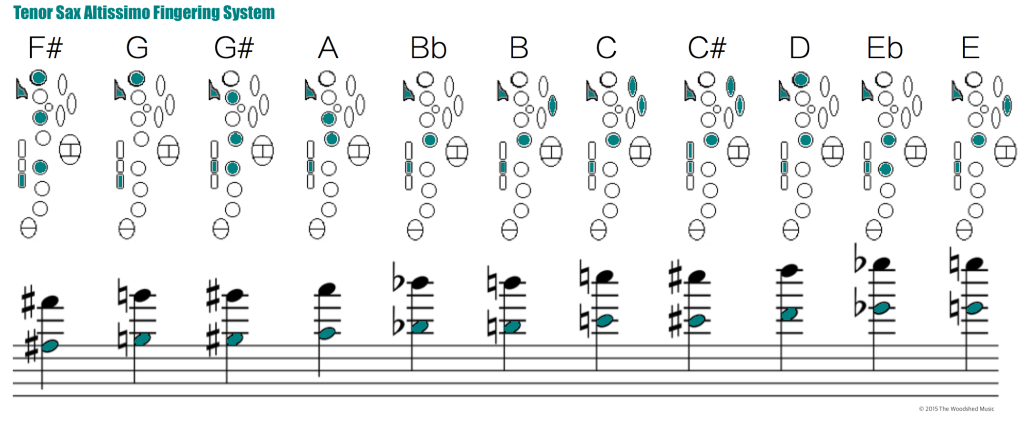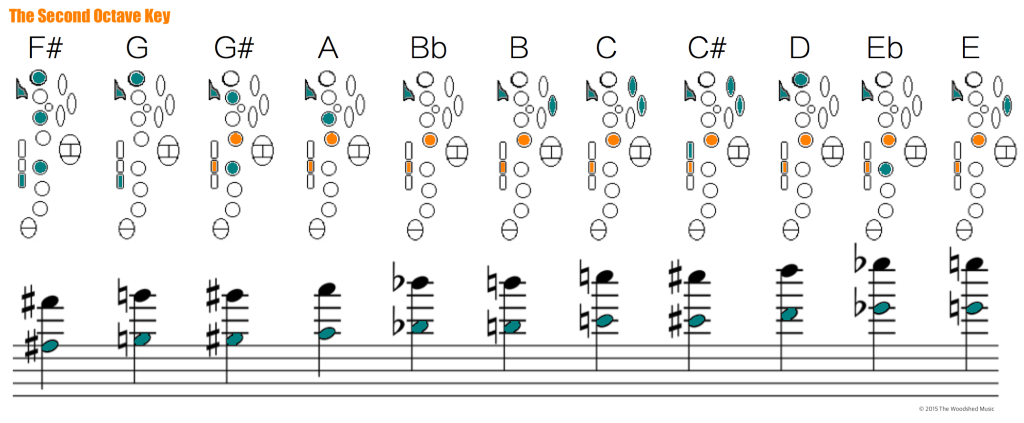 Learning to play in the altissimo (extreme upper) range of the saxophone requires patience, mostly on the part of the player, but also for whatever unlucky souls are forced to listen to your squawking. Progressing from squeaks to music is a process, but there are basic principles that should be isolated if you want to learn to control this demanding range of the saxophone.
Learning to play in the altissimo (extreme upper) range of the saxophone requires patience, mostly on the part of the player, but also for whatever unlucky souls are forced to listen to your squawking. Progressing from squeaks to music is a process, but there are basic principles that should be isolated if you want to learn to control this demanding range of the saxophone.
2 key elements to playing in the altissimo range:
- Throat Control – practice your overtones! There’s lots of literature on this, but Rasher’s Top Tones is the bible. Most of altissimo playing is controlled by your throat, not your fingers, so you MUST start here.
- Fingerings – the saxophone wasn’t built to play in this range, and many “standard” fingerings are cumbersome to execute.
How can I settle on the right fingerings?
Ok, so you’ve developed great throat control through lots of overtone practice. But your technique is still not all that advanced up there. There are dozens of fingerings for each note on various fingering charts (see Ted Nash’s Studies in High Harmonics for a good reference), but most offer no guidance for which ones should be used together. Unfortunately it’s not so cut and dry, read on.
About 2-3 months ago, I was in a small group lesson with a true altissimo master, Ben Wendel. Being the unapologetic saxophone geek that I am, I asked about his altissimo fingering system. He patiently walked us through all his fingerings, but he also reinforced that the exact fingering system you use is less important than having great throat control, paired with a fingering system that’s comfortable and reliable. I ended up changing many of my fingerings as a result after much exploration, adopting a handful of Ben’s but also finding some of my own that just work better and are less cumbersome.
In my quest for my perfect system, I looked for the right combination of the following 3 elements:
- Fluidity – the more easily you can move from one note to another, the more technical mastery you will be able to gain.
- Intonation – Although fingerings are of far less importance than how you control each note, I prefer a system that trends a bit sharp, allowing me to loosen my embouchure and spare my chops.
- Stability – every saxophone is different, and some notes just speak better on each horn than others. You want to find fingerings that you can reliably hit and control.
Interested in jazz saxophone lessons in the Los Angles area or remotely? The Woodshed author Mike is now accepting students! Learn More >>
…
My tenor altissimo fingerings
These may or many not work for you. However, this is the set of fingerings I currently use on tenor, and they are helping me reach the next level with my altissimo playing.
Here’s me taking them for a quick spin:
A hidden second octave key?
Take a look at the above system. One thing you may notice is that for every note above G, I keep down the third finger of my left hand (G-key) as well as the side C. It definitely takes a bit of getting used to: you need to learn to relax your left hand while keeping these fingers down, which is unnatural. However, you’ll find that this key duo is an incredible altissimo stabilizer, acting as a second octave key just for the altissimo range! Will it do much for you if you haven’t done lots of throat study? No. But with the right foundation, it’s certainly helps. Take another look at the fingering chart:
Parting Advice
Mastering the altissimo range won’t happen overnight. Here are some tips I’ve picked up over time to help me along my journey, which I’ve only just begun:
- Don’t even start worrying about altissimo until you have a great sound and fluid technique in the “normal range” of the horn.
- Once you’re ready, stop thinking of the altissimo as a special register ASAP. Begin to incorporate it into whatever you would be practicing on the “normal” range of the horn.
- Although throat control matters most, slight changes to your embouchure can help. Try rolling your lip out a bit and moving your jaw forward for the high stuff.
- Don’t change your setup to get better altissimo out. Yes brighter mouthpieces and harder reeds help, but they are an unnecessary crutch. Your setup should be focused on the sound and feel you want, not on helping you play up high.
- If your lower lip gets raw, you’re either using too much pressure, practicing up high too much, or have extremely sharp lower teeth (these can be filed down, but only as a last resort, and that’s probably not your problem). Occasional use of dental tape or folded up paper over your lower teeth helps, but getting used to this may cause you to pinch too much in the normal range. I recommend it for soprano but only sparingly for alto/tenor.
- Pay attention to your intonation, articulation and sound. Don’t settle for just getting the notes to speak.
- Start with slow scales and arpeggios.
- Try going back to old method books and taking everything up an octave.
- A bit of inspiration:


